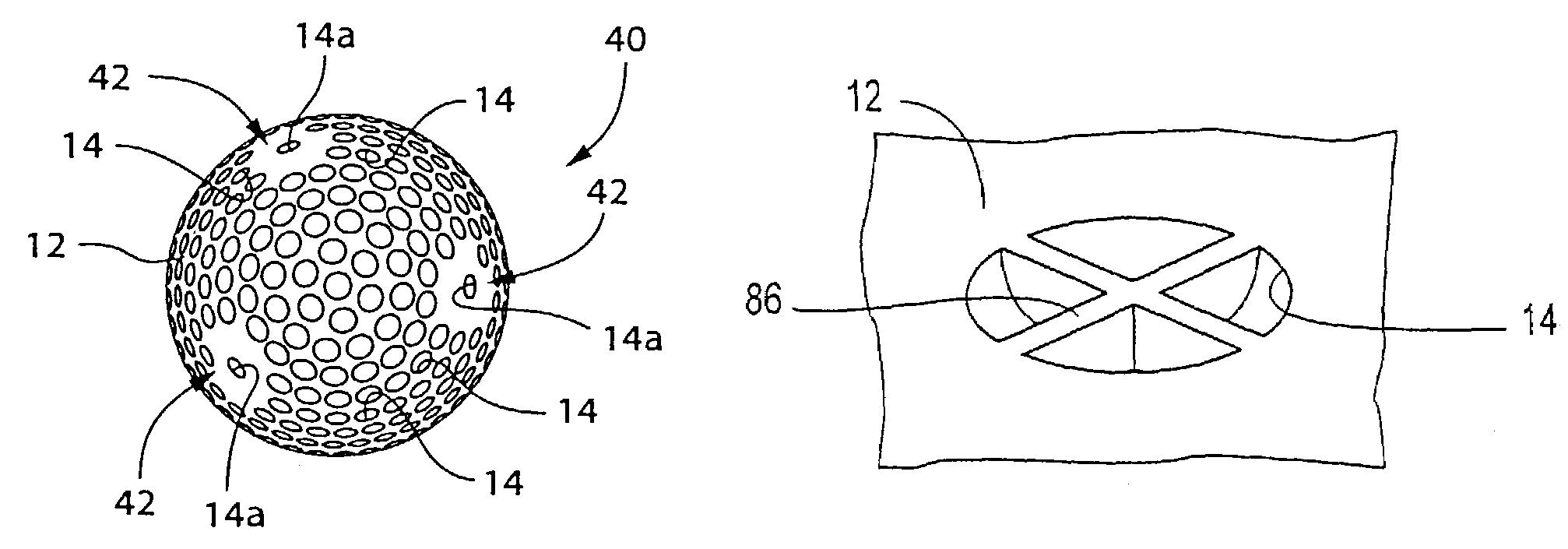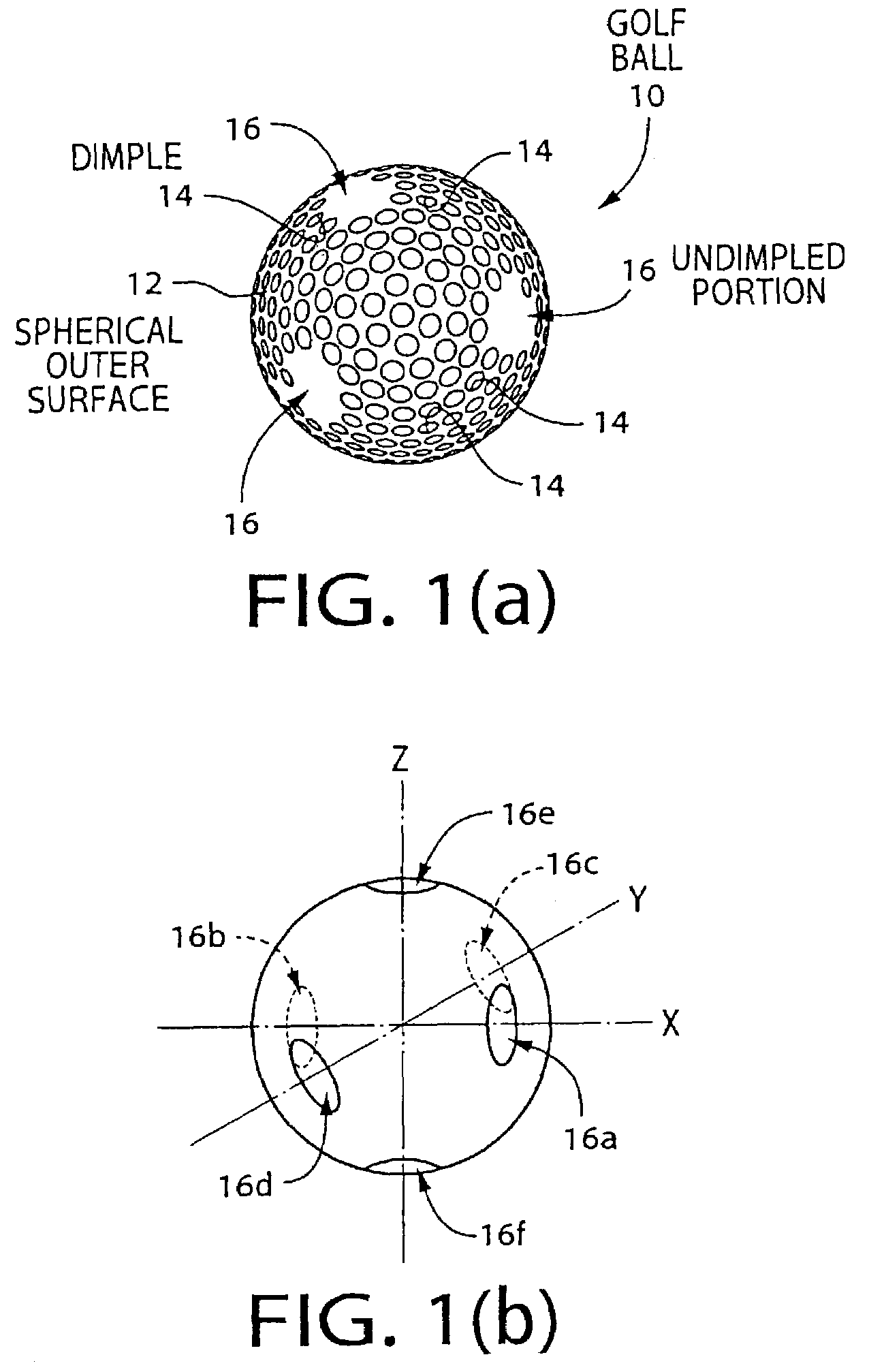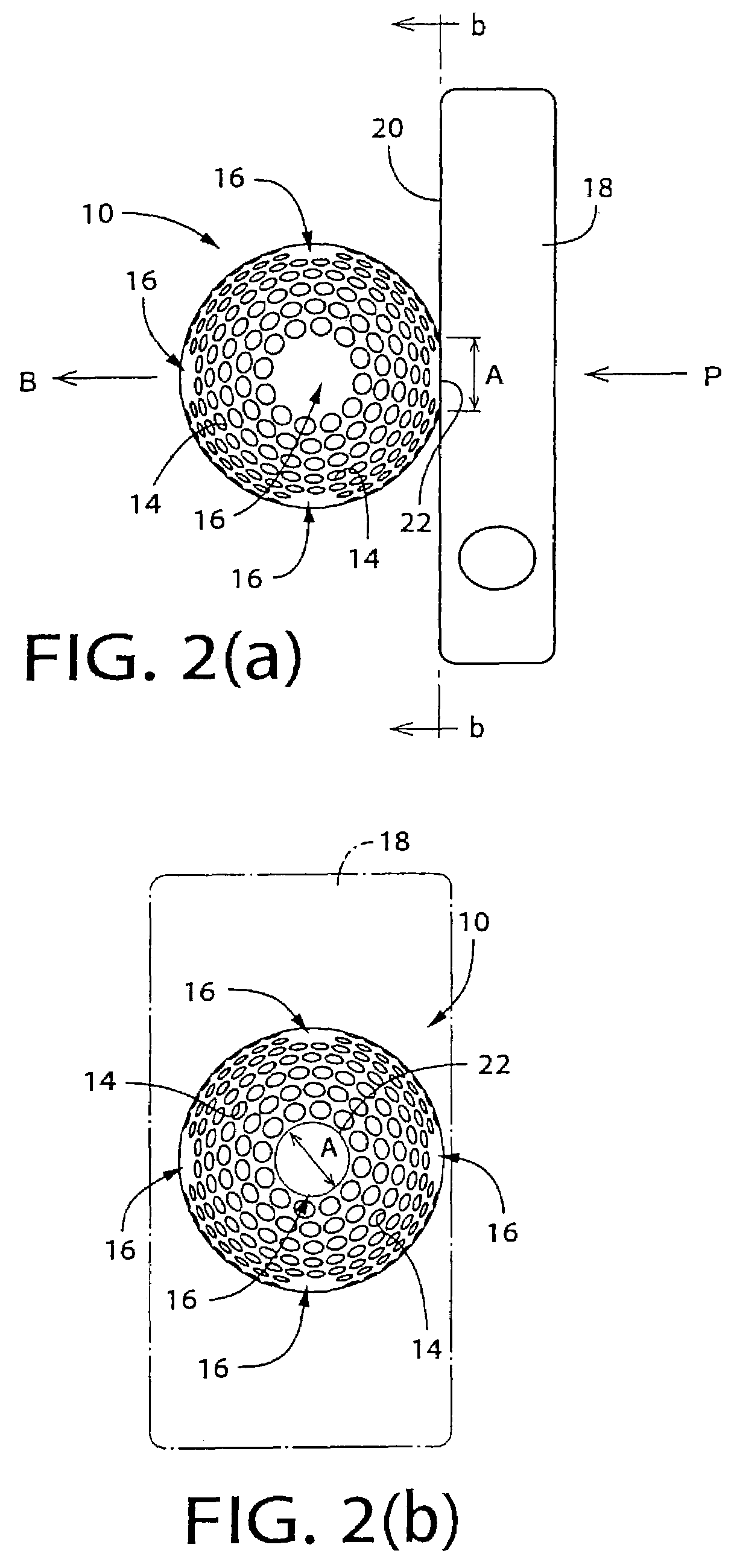Golf ball with improved directional stability in putting stroke
a golf ball and directional stability technology, applied in the field of golf balls, can solve the problems of increasing the difficulty of controlling the direction of the ball, reducing the accuracy of the putting stroke, so as to prevent the reduction of the flight distance and minimize the negative effect of aerodynamic
- Summary
- Abstract
- Description
- Claims
- Application Information
AI Technical Summary
Benefits of technology
Problems solved by technology
Method used
Image
Examples
first embodiment
[0060]Referring first to FIGS. 1(a) and (b), there is shown a golf ball 10 of this invention which is constructed in accordance with golf international standards. The golf ball 10 has a predetermined radius, and is made of a rubber material similar to that used in conventional golf balls to have a certain degree of elasticity. The golf ball 10 has, in its spherical outer surface 12, a multiplicity of shallow depressions or dimples 14 formed to be arranged according to a predetermined pattern. Each of the dimples 14 has a substantially circular shape whose diameter is about 1–3 mm.
[0061]In the major portion of the spherical outer surface 12 of the ball 10, the spacing interval between adjacent ones of the dimples 14 is not larger than, for example, about 1–2 mm. However, in local portions of the spherical outer surface 12, the spacing interval between the adjacent dimples 14 is increased to, for example, about 10 mm. That is, the spherical outer surface 12 has, in its local portions,...
second embodiment
[0073]FIGS. 6 and 7 show a golf ball 40 of the second embodiment which has single-dimple portions 42 in place of the undimpled portions 16. That is, the spherical outer surface 12 of the ball 40 has six single-dimple portions 42 which are arranged to be symmetrical with each other with respect to the center of the golf ball 40, in addition to the major portion in which the spacing interval between adjacent ones of the dimples 14 is not larger than about 1–2 mm. In each of the six single-dimple portion 42 (three of which are invisible in FIG. 6), the dimples 14 are absent except a single one 14a of the dimples 14 which is located at a central part of each of the single-dimple portions 42. Each single-dimple portion 42 is dimensioned such that a circle having a diameter of about 10 mm is inscribed in the single-dimple portion 42. The dimple 14a located at the central part of the single-dimple portion 42 has a diameter of about 1–3 mm and the same shape as the other dimples 14, and has...
third embodiment
[0081]In the golf ball 50 of the present third embodiment, the grooves 52 of the lattice-arranged groove portion 54 are arranged in a lattice so as to be symmetrical with each other. The symmetrical arrangement of the grooves 52 further reduces the deviation of the center of distribution of the reaction force from the center of the pressed area 22, where the center of the pressed area 22 is deviated from the center of the lattice-arranged groove portion 54, i.e., where the golf ball 50 is not hit at the center of the lattice-arranged groove portion 54. Thus, the symmetrical arrangement of the grooves 52 is effective to further improve the directional stability of the ball 50 in a putting stroke.
[0082]FIG. 9 shows a golf ball 60 of the fourth embodiment of the present invention. The golf ball 60 has annular groove portions 58 in place of the lattice-arranged groove portions 54. That is, the spherical outer surface 12 of the golf ball 60 has six annular groove portions 58 (three of wh...
PUM
 Login to View More
Login to View More Abstract
Description
Claims
Application Information
 Login to View More
Login to View More - R&D
- Intellectual Property
- Life Sciences
- Materials
- Tech Scout
- Unparalleled Data Quality
- Higher Quality Content
- 60% Fewer Hallucinations
Browse by: Latest US Patents, China's latest patents, Technical Efficacy Thesaurus, Application Domain, Technology Topic, Popular Technical Reports.
© 2025 PatSnap. All rights reserved.Legal|Privacy policy|Modern Slavery Act Transparency Statement|Sitemap|About US| Contact US: help@patsnap.com



